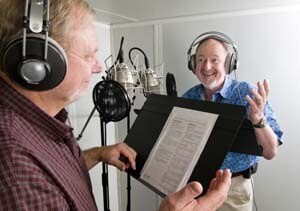Recent Episodes

Seventy years ago, the most important work in modern biology was published in the journal Nature - on the structure of DNA. Three articles finally proved that DNA was the genetic material by showing its structure. One was by Dr. Maurice Wilkins and his team, another by Dr. Rosalind Franklin and a doctoral student named Ray Gosling. The third was by Drs. James Watson and Francis Crick. The result was the birth of molecular biology, but it was controversial.
Dr. Rosalind Franklin was the X-ray crystallographer who produced much of the key data that captured the structure of DNA. She was a colleague of Dr. Wilkins at King's College and their relationship was so strained she abandoned her work.
But her photo was the single key piece of evidence to solving the DNA structure. She supervised her doctoral student, Ray Gosling on Photo 51, an X-ray image of the DNA that all high school students have probably seen. She presented critical measurements of DNA at a talk that was passed on to Drs. Watson and Crick without her consultation. This strengthened the thought that DNA was doubled stranded with each strand running in opposite directions.
Drs. Watson and Crick used this data to propose a detailed physical model that explained DNA structure and sealed the argument. The pair were awarded the Nobel. Some claim her work was stolen which might be an over-reach. But the pair did not give her the credit she deserved. The Nobel can't be given posthumously, but her work on DNA was certainly deserving of it.
You can now hear additional episodes on many of your favorite podcast providers - visit Buzzsprout to subscribe.
More Information
Sexism in science: did Watson and Crick really steal Rosalind Franklin's data?
The race to uncover the structure of DNA reveals fascinating insights into how Franklin's data was key to the double helix model, but the 'stealing' myth stems from Watson's memoir and attitude rather than facts...
Speed read: Deciphering Life's Enigma Code
In the mid-to-late 1940s, scientists began to suspect that the molecules that are responsible for heredity were not proteins, but in fact DNA, short for deoxyribonucleic acid. But how could a molecule long considered to be simple and inert hold the secret of life? The Nobel Prize in Physiology or Medicine in 1962 was awarded to James Watson, Francis Crick and Maurice Wilkins for their discovery of the molecular structure of DNA, which helped solve one of the most important of all biological riddles...

Medicine...
Medicine is constantly advancing – that is a great thing about life in the 21st century. But it doesn’t just happen. Dedicated biomedical scientists are making discoveries that translate into those new medical advances.
Biomedical science is broad, encompassing everything from social science to microbiology, biochemistry, epidemiology, to structural biology and bioinformatics to name just a few areas. And, it can involve basic fundamental biology, the use of AI and chemistry to clinical studies that evaluate new medicines in patients.
No matter the research focus, the goal is always the same, to advance human health. It may take a few months, a few years or for fundamental science, a few decades. Few people make the connection that biomedical science is medicine and that biomedical scientists are working today on the medicine of tomorrow. Our weekly 500-word newspaper columns and 2-minute radio shows and podcasts provide insights into a broad range of biomedical science topics.
Medical Discovery News is dedicated to explaining discoveries in biomedical research and their promise for the future of medicine.





